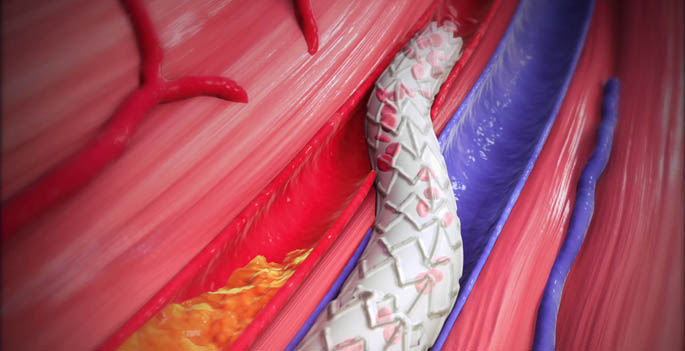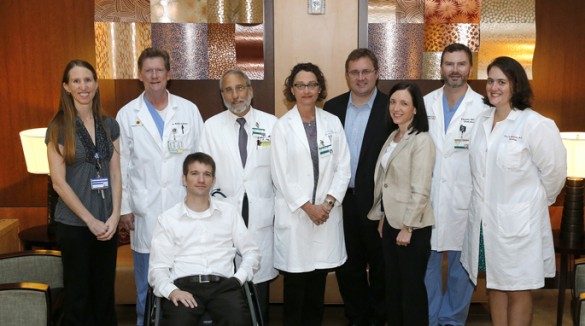Vanderbilt Heart and Vascular Institute is now offering a new procedure called TCAR for patients with carotid atherosclerosis disease that reduces stroke risk for many high-risk patients during interventions for extracranial carotid disease.
The TCAR procedure, or Trans Carotid Artery Revascularization, is a combined or hybrid procedure using a small incision in the neck to safely insert a sheath (tube) into the carotid artery to facilitate placement of a stent. From there, surgeons place a small tubular medical device in the artery that reverses the direction of blood flow and captures and filters any plaque that becomes dislodged during the stenting procedure, preventing the plaque from reaching the brain and causing a stroke.
The procedure is used in patients with significant stenosis (narrowing of the carotid arteries) who either have had a stroke or are at risk for stroke.

Traditionally, the procedure to clean the carotid arteries has consisted of an open surgery (incision in the neck) and surgical extraction of the plaque.
“This open plaque removal is a great procedure with great results for most patients,” said John Curci, MD, associate professor of Vascular Surgery. “Alternatives have been needed for those patients who are at high risk of complications for that procedure.”
For several decades, carotid stenting in those high-risk patients was accomplished by going through the groin arteries and placing a stent while using filters to capture debris released during the procedure to expand blood flow to treat the carotid narrowing, said Patrick Stone MD, professor of Vascular Surgery.
However, standard carotid stenting had some critical limitations in many patients. The TCAR procedure solved some of those limitations by combining stents and surgery to offer a less invasive approach. It has shown promising results and has increasing data to support its use for many patients with carotid disease both with and without recent history of TIA or stroke, Stone said.
The TCAR procedure reduces such stroke risk by up to 50%, Curci said. “It can be a pretty dramatic change in your risk of stroke,” he said.
Stone added that the traditional transfemoral procedure of stenting is still an acceptable option for some patients.
“Having a group that has the capability of offering the best option of the three current options expands treatment strategies,” he said.
Such a procedure is possible because of the expertise of the Vascular Surgery team, Curci said.
“With the addition of the TCAR procedure, only the Vascular Surgery service can provide all types of procedural therapies for carotid atherosclerotic disease,” Curci said. “For the patient, it means getting offered the best procedure for the individual.”















